Cats come in all shapes and sizes. Some are big, some are small, and some are just downright weird-looking. The fact that there are so many different cat breeds means there’s something for everyone. However, with so many cat breeds it can be difficult to find the right one for you that has a specific trait you’re looking for.
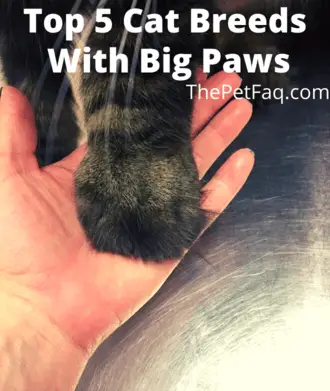
Today, we’re going to take a look at the top 5 cat breeds with incredibly large paws. In general, larger cat breeds have larger paws, but that’s not always the case. There are large cat breeds that do not have very big paws. Cats evolve to have big paws for different reasons, such as being able to support their large bodies or letting them walk in snow better.
Let’s take a closer look at which cat breeds have the largest paws.
1. Maine Coon
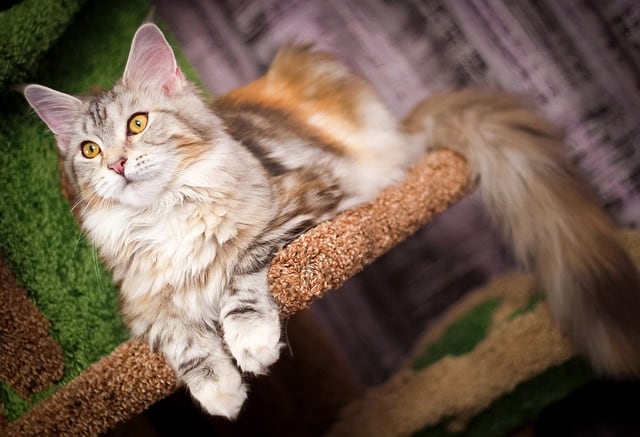
The fact that the number 1 on this list is the Maine Coon shouldn’t come as much of a surprise. The Maine Coon is an absolute unit of a cat. The average fully-grown male Maine Coon weighs 13 to 18 pounds while females weigh between 8 to 12 pounds. To support their large, heavy bodies they need big paws.
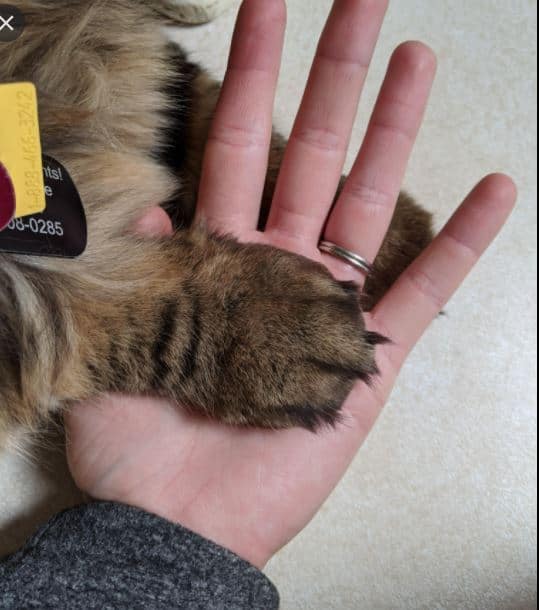
Take a look at the image above. That’s a large paw! One of the reasons why Maine Coons have evolved to have such large paws is because they’re from an environment where it often snows. Large paws allow them to walk on the snow rather than sinking into it which makes hunting in the snow a whole lot easier.
If you want a cat with large paws you can’t go wrong with the Maine Coon. Not only do they have enormous paws, but they’re also great companions. They’re intelligent, friendly, and very beautiful. They enjoy spending time with their owners but aren’t needy – they’re happy to receive your attention but won’t get upset if you’re busy for a few minutes.
They’re not exactly lapcats but instead prefer to sit near you.
2. Siberian Cat
View this post on Instagram
The number 2 on our list of cats with big paws is the Siberian Cat. The Siberian is another large cat. They’re slightly smaller than Maine Coons, but still, they have an imposing size.
The Siberian has big round paws with tufts of fur between their toes, making their already big paws look even bigger!
This breed is native to Siberia in Russia, where it lives in the forest. Because it’s so cold there, the breed has evolved to have a very thick, long coat, giving them a striking appearance. In addition, their big paws allow them to walk on the snow more easily.
The Siberian is an intelligent, playful, and affectionate breed. They take a long time to reach maturity and typically have kitten-like behavior for up to the first 5 years of their life. They get very attached to their owners and have a tendency to follow them around the house. They’re real lap cats and enjoy spending time sitting in your lap having their long, beautiful fur brushed, or being petted.
They’re also a relatively quiet breed. They make their needs known with trills, chirps, purrs, and soft meows, but on the whole are not very vocal, a much-appreciated feature of the breed for people who enjoy peace and quiet.
3. Norwegian Forest Cat
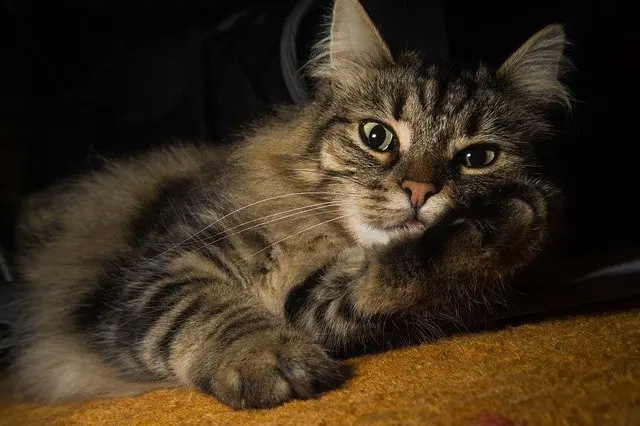
The Norwegian Forest Cat is number 3 on the list of cat breeds with large paws.
The Norwegian Forest Cat’s paws are sometimes described as a bit oversized because of how big and round they are. Similar to the Siberian Cat, the Norwegian Forest Cat has tufts of fur between their toes, making their already large paws look even bigger.
As the name suggests, this breed is native to the forests of Norway, in Europe. The weather in Norway can get very frigid, which is why this cat has developed a very thick coat and a long tail to protect them from the cold. They also have a dense, thick collar of fur around their neck, giving them a unique and wild look.
The Norwegian Forest Cat is a breed that is sometimes a little shy initially. However, once they open up they’re a great family pet. They love the company of their favorite humans but are not really lap cats. They enjoy being pet and will follow you around the house but do not typically spend a lot of time on your lap.
On the whole, this breed is intelligent, quiet, smart, and independent
4. Ragdoll

The Ragdoll is a cuddly, playful cat that stands out not only because of its large paws but also because of its bright blue eyes. These traits, in combination with their beautiful fur, give Ragdolls a unique appearance that many people fall in love with.
The Ragdoll originated in California in the 1960s and was fully recognized by the Cat Fanciers Association by the year 2000.
An interesting fact about this breed is that they got their name from the fact that they collapse and turn limp into the arms of whoever is holding them, kind of like a ragdoll!
The Ragdoll’s personality is very affectionate. They want to spend as much time as possible with their favorite humans, often cuddling with them in the bed or on the couch. They’re also quite intelligent and playful, you can teach them to fetch toys or come when their name is called.
5. Bengal Cat
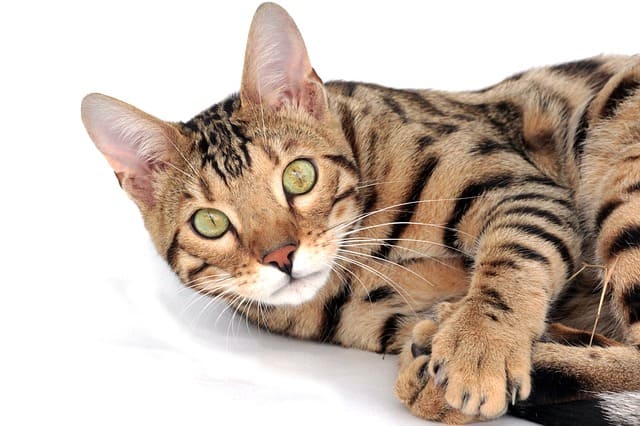
The last cat on this list is the Bengal. The Bengal is the only short-haired breed that made it to this list. The Bengal Cat came into existence as a result of mixing domestic cats with wild Asian Leopard Cats. Because of this, they’ve retained some of the wild cat’s traits, one of them being their large paws.
Interestingly enough, the creation of the Bengal Cat was not on purpose. The breed was created by mistake when a breeder left a black tomcat near an Asian Leopard Cat. They mated and as a result, the Bengal Cat was born!
Since the Bengal Cat has wild cat admixture their temperament can sometimes be challenging. They’re highly active and need a lot of attention and stimulation in order to be happy. A bored Bengal cat can turn destructive quite quickly.
A funny quirk of this breed is that they absolutely love being in the water. Most cat breeds hate water, but not the Bengal. The Bengal has no problem jumping in the shower or bath with you.
On the whole, they’re an intelligent and affectionate breed as long as you’re able to handle them.
- How Long Do American Eskimo Dogs Live? Important Factors and Care Tips - September 29, 2023
- Do American Bulldogs Need Grooming? Essential Tips and Care Guidelines - September 29, 2023
- Do Bengal Cats Enjoy Playing? Essential Tips for Keeping Them Active - September 29, 2023